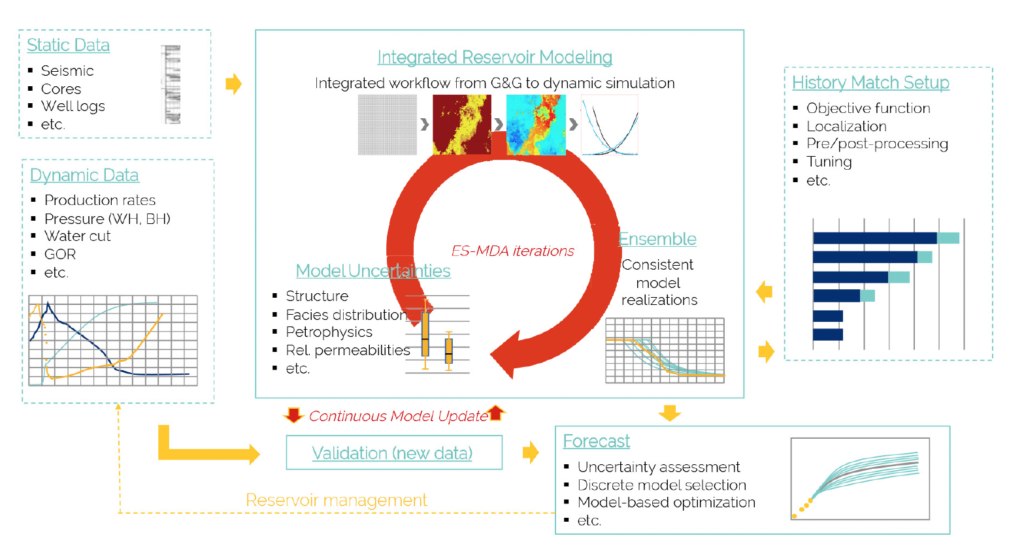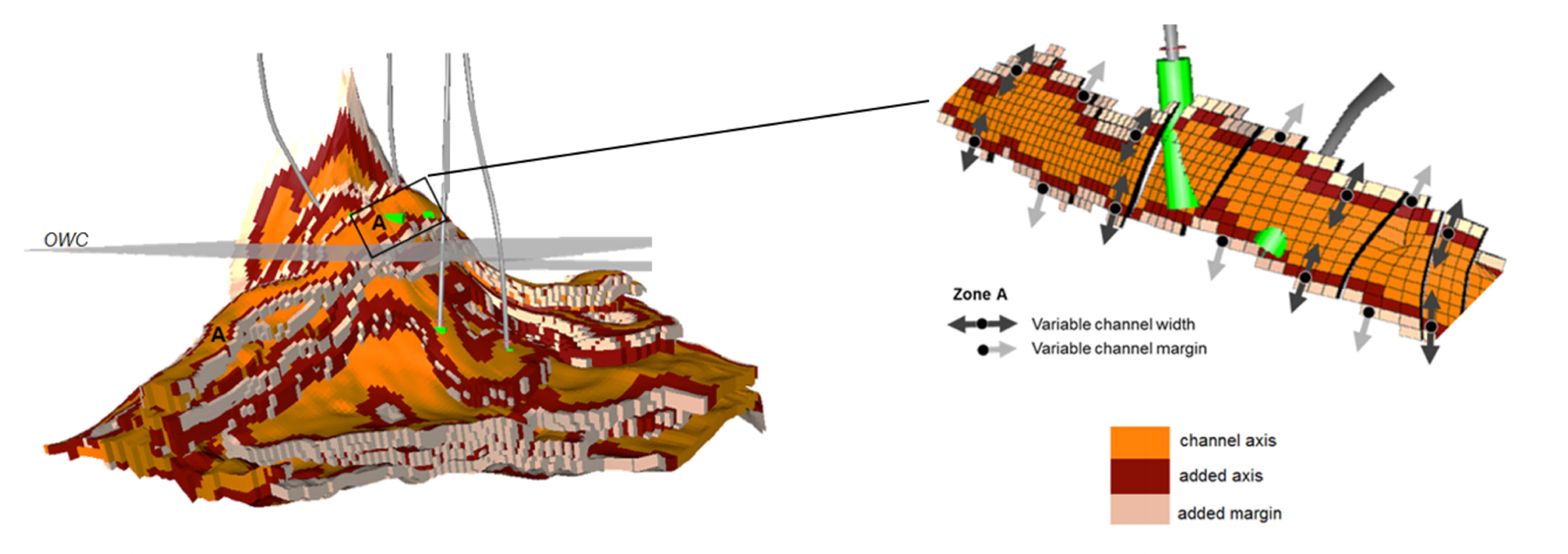Objective
Model and history match (HM) a complex turbidite reservoir with large uncertainties in faulting and channeling
Solution
Implementation of an interdisciplinary modelling workflow to create an ensemble of matched models using ResX
Outcomes
Reliable reservoir models that offer geologically consistent explanations of static and dynamic data where uncertainty is quantified in the forecast and model parameters
Project Description
History matching challenges
Typical challenges in traditional reservoir modelling and history matching include:
- Intensive, often manual, iterations
- Consistent integration of G&G and engineering understanding
- Capturing and propagating uncertainty
- Multiple, equally likely solutions
- Updating model(s) with new data
The way in which these challenges are approached can directly affect the commercial outcome of projects. As a result, there are a wide variety of approaches in methodology and asset team workflows.
The trial-and-error history matching method continues to be prevalent in most projects, but alongside this there is an increasing use of more automated techniques such as design of experiments or adjoint-based approaches. These methods explore larger solution spaces, but they are still constrained by practical or algorithmic constraints which limit the number of uncertainty parameters.
Ensemble-based modelling
The Ensemble Kalman-based method makes it possible to generate multiple matched models using any size of parameterization. For Eni’s complex reservoir, ResX’s integrated methodology made it possible to retain the necessary geological consistency.

Conceptual representation of the ensemble-based integrated workflow
Solution Highlights
100 equally probable reservoir models were created that consistently honor the current measurements of both static and dynamic data, while capturing and propagating the uncertainty in the modelling and data assimilation process.
- ResX was integrated into five workflows covering the entire reservoir modelling process including:
1) reservoir modelling; 2) ensemble generation; 3) data assimilation; 4) validation; 5) forecast (see figure above). - The reservoir modelling workflow consists of three main processes: structural modelling and gridding, facies modelling, and petrophysical modelling.
- The chosen parameterization includes both scalar variables and 3D grid properties, for a total of almost 10 million parameters.
- The approach ensured geological consistency and workflow repeatability in the reservoir modelling and data assimilation process.
- The repeatability makes it possible to easily integrate new static and dynamic data and to re-parametrize the model when the match quality is unsatisfactory.
- Through the analysis of the updated model properties, new reservoir insights were identified including flow barriers in certain areas and in-place volume constraints.
References
For more details see SPE Paper 186049
Cover illustration: complex channelized two million cell reservoir model, courtesy of Eni
